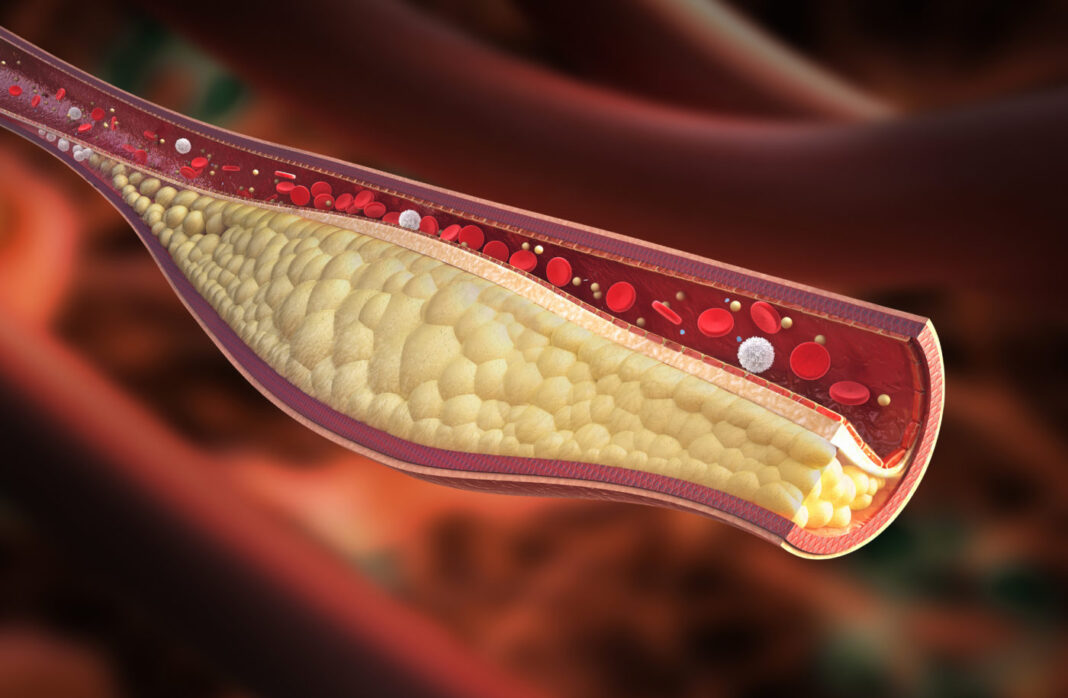By an exceptionally large margin, cardiovascular disease (CVD) still represents the leading cause of death among humans worldwide. While considerable research time and drug development money has been poured into identifying CVD risk factors and therapeutic interventions, there are still a fair number of things scientists don’t know about the genetics of this disease. However, now a team of investigators at the Carnegie Institution for Science and Johns Hopkins University has just released new data on a novel gene mutation that could lead to a therapeutic target for clogged arteries and other health risks that stem from an excess of harmful fats in the bloodstream. Findings from the new study were published recently in PLOS Genetics through an article titled, “A point mutation decouples the lipid transfer activities of microsomal triglyceride transfer protein.”
“Cardiovascular disease occurs when lipids from the blood plasma are deposited in the walls of blood vessels, ultimately restricting blood flow,” explained senior study investigator Steven Farber, PhD, a staff member at Carnegie, adjunct professor at Johns Hopkins, and who specializes in elucidating how cells process lipids. “This complex disease affects about a third of the world’s population, so improving our understanding of the mechanisms that regulate the levels of blood lipids has important public health implications.”
Lipids, such as cholesterol and triglycerides, are shuttled around the circulatory system by a protein called Apolipoprotein-B (ApoB). These complexes of lipid and protein are called ApoB-containing lipoproteins and are essential for transporting lipids from the intestine and liver to the tissues of the body. However, because they can also cause cardiovascular disease, they are commonly known as “bad cholesterol.”
In this new research, the research team focused on a protein that is critical for the synthesis of ApoB-containing lipoproteins. This protein called MTP, or microsomal triglyceride transfer protein, is highly conserved in animals, from insects to humans. MTP loads lipids onto ApoB, a key initial step in the synthesis of ApoB-containing lipoproteins.
“Here we report the discovery of a missense mutation in MTP, a protein that is essential for B-lp production,” the authors wrote. “This mutation of a conserved glycine residue to valine (zebrafish G863V, human G865V) reduces B-lp production and results in yolk opacity due to aberrant accumulation of cytoplasmic lipid droplets in the YSL. However, this phenotype is milder than that of the previously reported L475P stalactite (stl) mutation. MTP transfers lipids, including triglycerides and phospholipids, to apolipoprotein B in the ER for B-lp assembly. In vitro lipid transfer assays reveal that while both MTP mutations eliminate triglyceride transfer activity, the G863V mutant protein unexpectedly retains ~80% of phospholipid transfer activity.”
Normally, MTP can transfer different types of lipids to ApoB, including triglycerides, which are a major source of energy, and phospholipids, the building blocks of membranes in the cell. However, the researchers revealed for the first time a mutation in MTP that blocks the loading of triglycerides, but not phospholipids, onto ApoB.
“The separation of these two transfer functions was unexpected and is important because high triglyceride levels in lipoproteins are correlated with bad clinical outcomes like diabetes and heart disease,” said lead study investigator Meredith Wilson, PhD, a postdoctoral fellow in the Farber lab at Carnegie.
Previously identified mutations in MTP that prevent both transfer functions of the protein cause a malabsorption syndrome, in which the intestines have difficulty absorbing fats and fat-soluble vitamins from the diet. This can result in gastrointestinal distress or more serious problems, such as malnutrition or severe weight loss. However, zebrafish with this newly identified mutation do not exhibit malabsorption or growth defects, because they can still transfer phospholipids to make ApoB-containing lipoproteins.
For years, MTP has been considered a possible therapeutic target to help lower triglyceride levels in the blood and prevent cardiovascular disease. However, the existing chemical inhibitors of MTP are too effective and block all MTP function, which can cause intestinal fat malabsorption and a dangerous accumulation of fat in the liver.
“Our study opens the door for the design of more specific MTP inhibitors that mimic this new mutation and selectively block triglyceride transfer to ApoB,” concluded Wilson. “Our data suggest that this type of inhibitor could reduce circulating triglyceride levels without the risk of unpleasant and serious side effects in the intestine and liver.”


